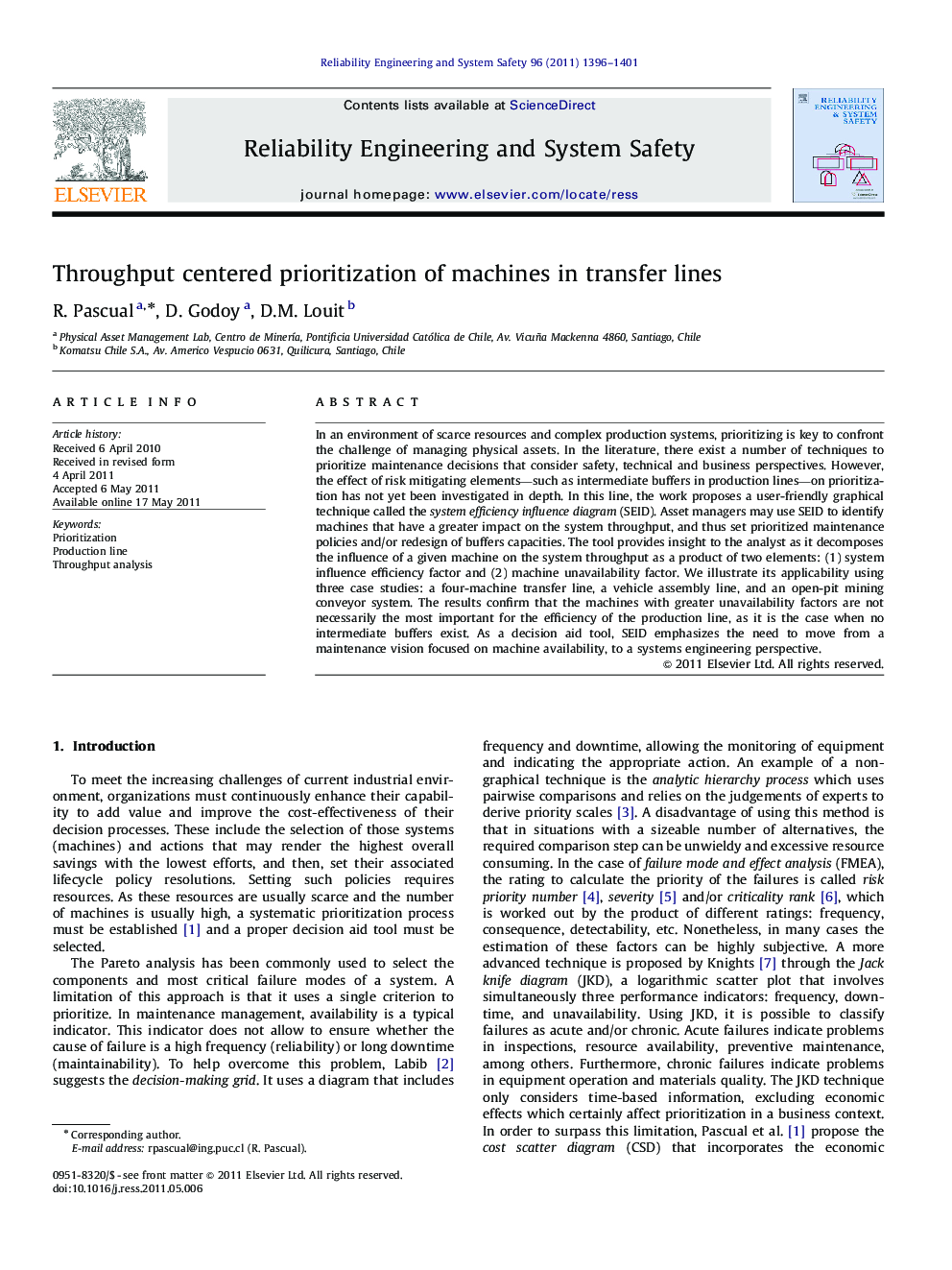| Article ID | Journal | Published Year | Pages | File Type |
|---|---|---|---|---|
| 806405 | Reliability Engineering & System Safety | 2011 | 6 Pages |
In an environment of scarce resources and complex production systems, prioritizing is key to confront the challenge of managing physical assets. In the literature, there exist a number of techniques to prioritize maintenance decisions that consider safety, technical and business perspectives. However, the effect of risk mitigating elements—such as intermediate buffers in production lines—on prioritization has not yet been investigated in depth. In this line, the work proposes a user-friendly graphical technique called the system efficiency influence diagram (SEID). Asset managers may use SEID to identify machines that have a greater impact on the system throughput, and thus set prioritized maintenance policies and/or redesign of buffers capacities. The tool provides insight to the analyst as it decomposes the influence of a given machine on the system throughput as a product of two elements: (1) system influence efficiency factor and (2) machine unavailability factor. We illustrate its applicability using three case studies: a four-machine transfer line, a vehicle assembly line, and an open-pit mining conveyor system. The results confirm that the machines with greater unavailability factors are not necessarily the most important for the efficiency of the production line, as it is the case when no intermediate buffers exist. As a decision aid tool, SEID emphasizes the need to move from a maintenance vision focused on machine availability, to a systems engineering perspective.
► We propose a graphical technique to prioritize machines in production lines. ► The tool is called “system efficiency influence diagram” (SEID). ► It helps setting prioritized maintenance policies and/or redesign of buffers. ► The SEID technique focuses on system efficiency and throughput. ► We illustrate its applicability using three case studies.
